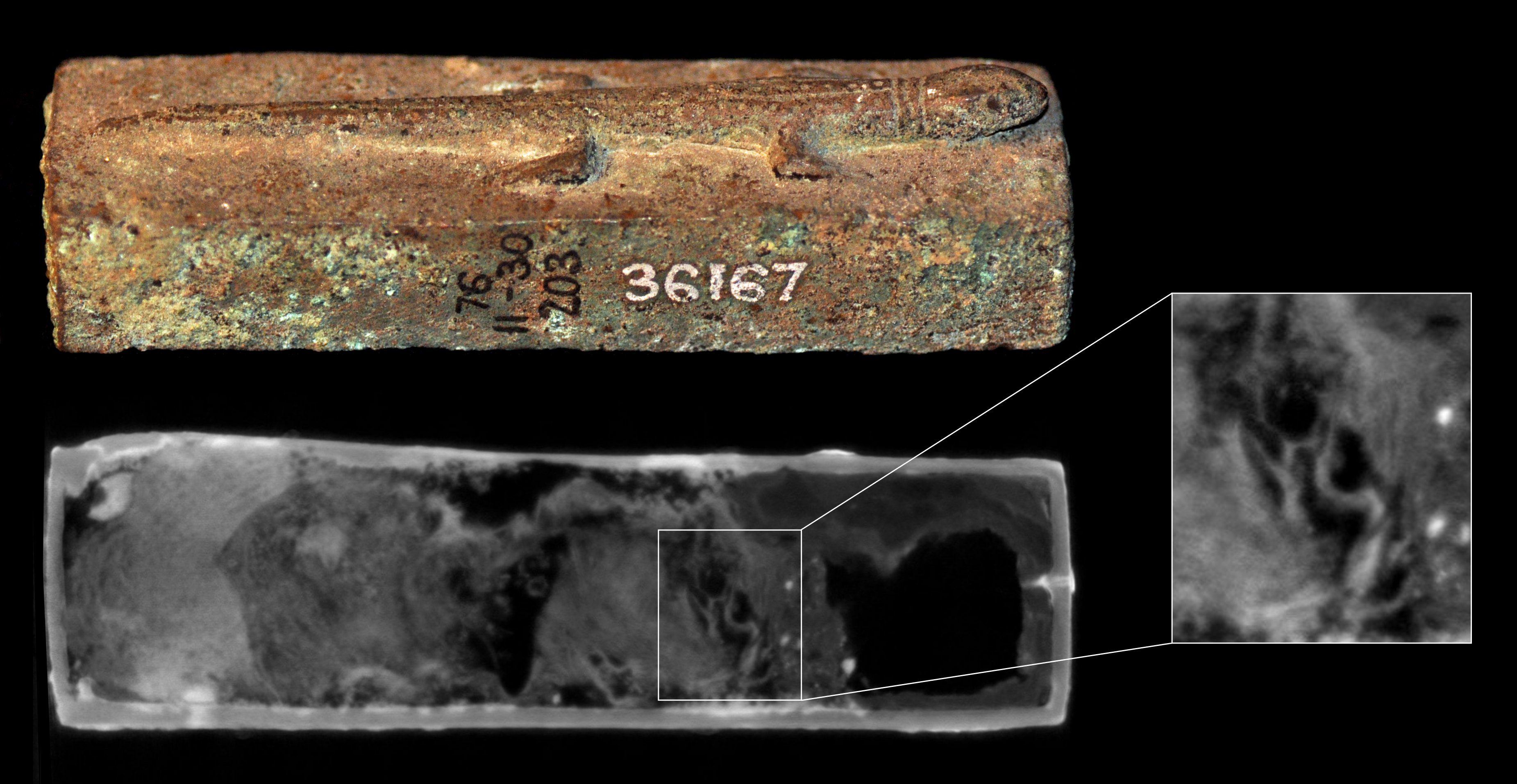Ancient Egyptian copper coffins that have been sealed for over 1,500 years have been “digitally cracked open” using fancy new imaging techniques to reveal their mummified contents. Although many of the innards have not fared well over the past centuries, it appears that mummified lizards wrapped in linen were placed in the coffins. Why, however, is still a bit of a mystery.
Scientists at the British Museum in London studied the artifacts using neutron tomography, a technique that collects information about the structure inside an object by working out how a neutron beam passes through it.
Six coffins were analyzed in total. Three of the coffins, topped with lizard and eel figures, have been dated to between 500 and 300 BCE and were first discovered in the ancient Egyptian city of Naukratis. A fourth coffin, topped by a lizard figure, has been dated to between 664 and 332 BCE and was discovered in the ancient city of Tell el-Yehudiyeh.
The final two coffins are decorated with the figure of a bizarre creature that’s part-eel, part-cobra with a human head (top image). This pair were dated to between 650 and 250 BCE, although their origin is unknown.

The team used neutron imaging to reveal a lizard skull (inset) in one of the coffins. Image credit: The Trustees of the British Museum and O’Flynn et al.
Bones were found in three of the coffins. Inside one was the intact skull of an animal that appears to have belonged to a species of wall lizard (Mesalina) endemic to North Africa. Another two coffins contained ground-up bones that have broken down in shards, which are suspected to be lizards too, while the remaining three appeared to be empty.
It’s notable that three of the coffins also contained evidence of linen, which was commonly used in Ancient Egyptian mummification.
Additionally, three coffins also contained traces of lead. Perhaps this was to help with weight distribution, the researchers argue, or maybe it was featured because lead was seen as a “magical” material by this culture.
It’s well known that the ancient Egyptians were wild about animal mummies. Many mummified species have been discovered at sites in Egypt, including countless dogs, cats, baboons, lions, horses, goats, snakes, birds, and even crocodiles.
There’s some debate around why they did this, but it’s safe to assume ancient Egypt placed a huge amount of cultural and likely spiritual importance on animals. Some believe the animal remains were used as offering to the gods, while others argue that they were seen as living embodiments of the gods themselves and perhaps even directly worshiped.
“Animal remains, believed to be physical incarnations of deities, votive offerings, or part of a ritual performance, have been discovered inside many religious complexes, mostly dating to the 1st millennium BCE. Remains were sometimes placed within statues of animals or inside boxes featuring a representation of the animal on the top. Such boxes are interchangeably referred to in Egyptological literature as ‘animal coffins’ or ‘votive boxes’, although it is not always clear if they systematically contain the remains of an animal, or if they were votive in nature rather than performing some ritual function,” the study authors write.
The study is published in the journal Scientific Reports.
Source Link: Fantastic Beasts Found Inside Ancient Egyptian Coffins Sealed For 1,500 Years